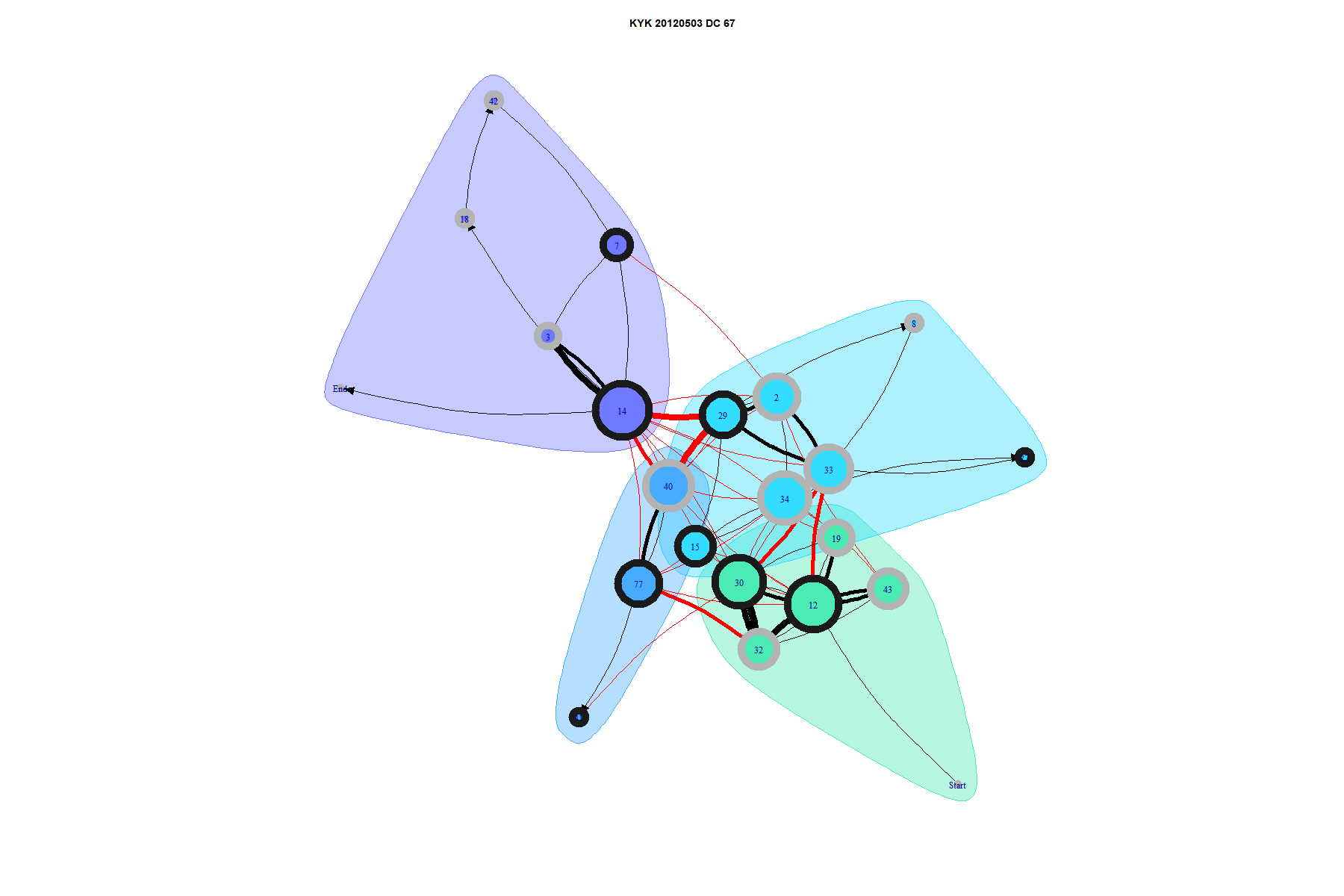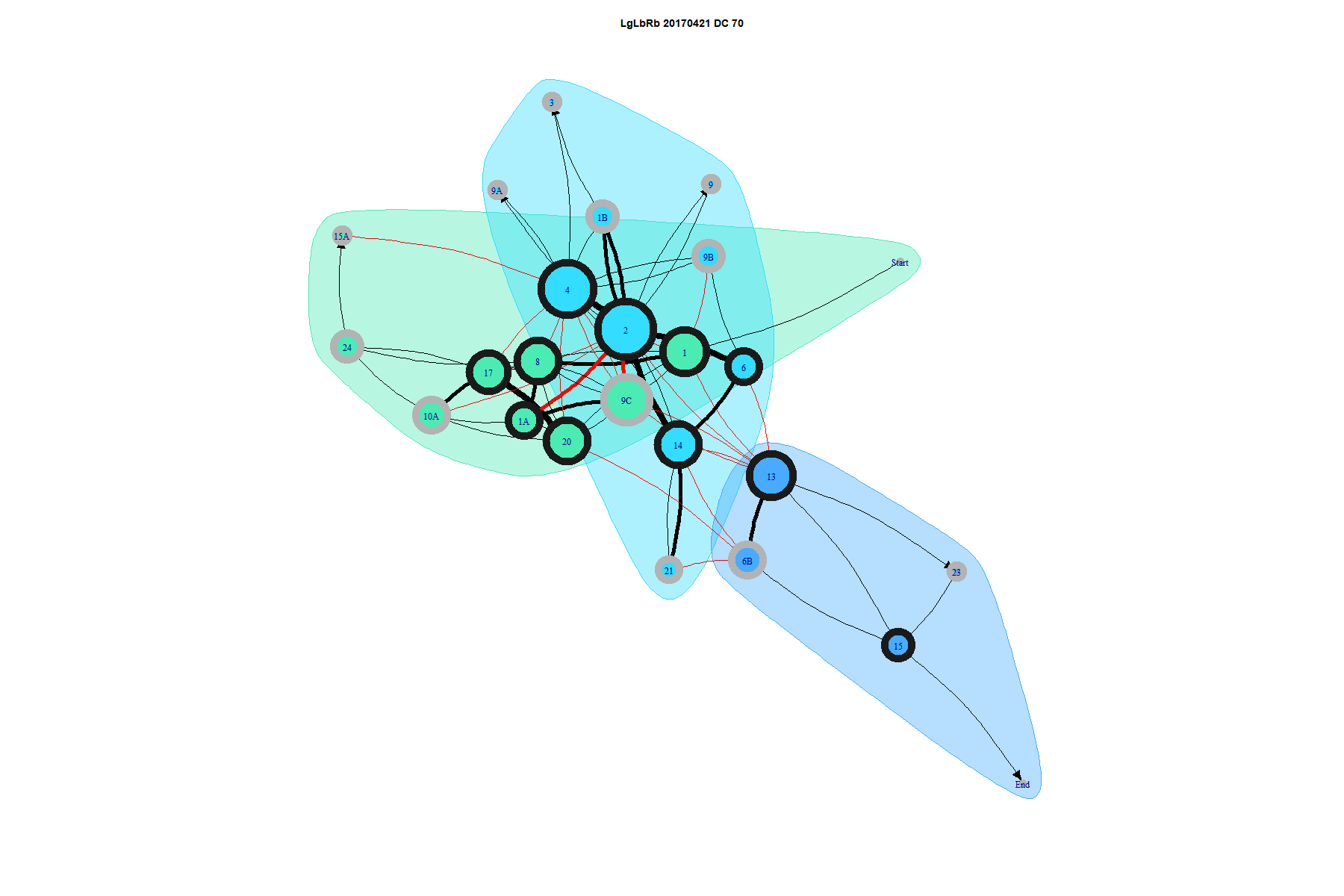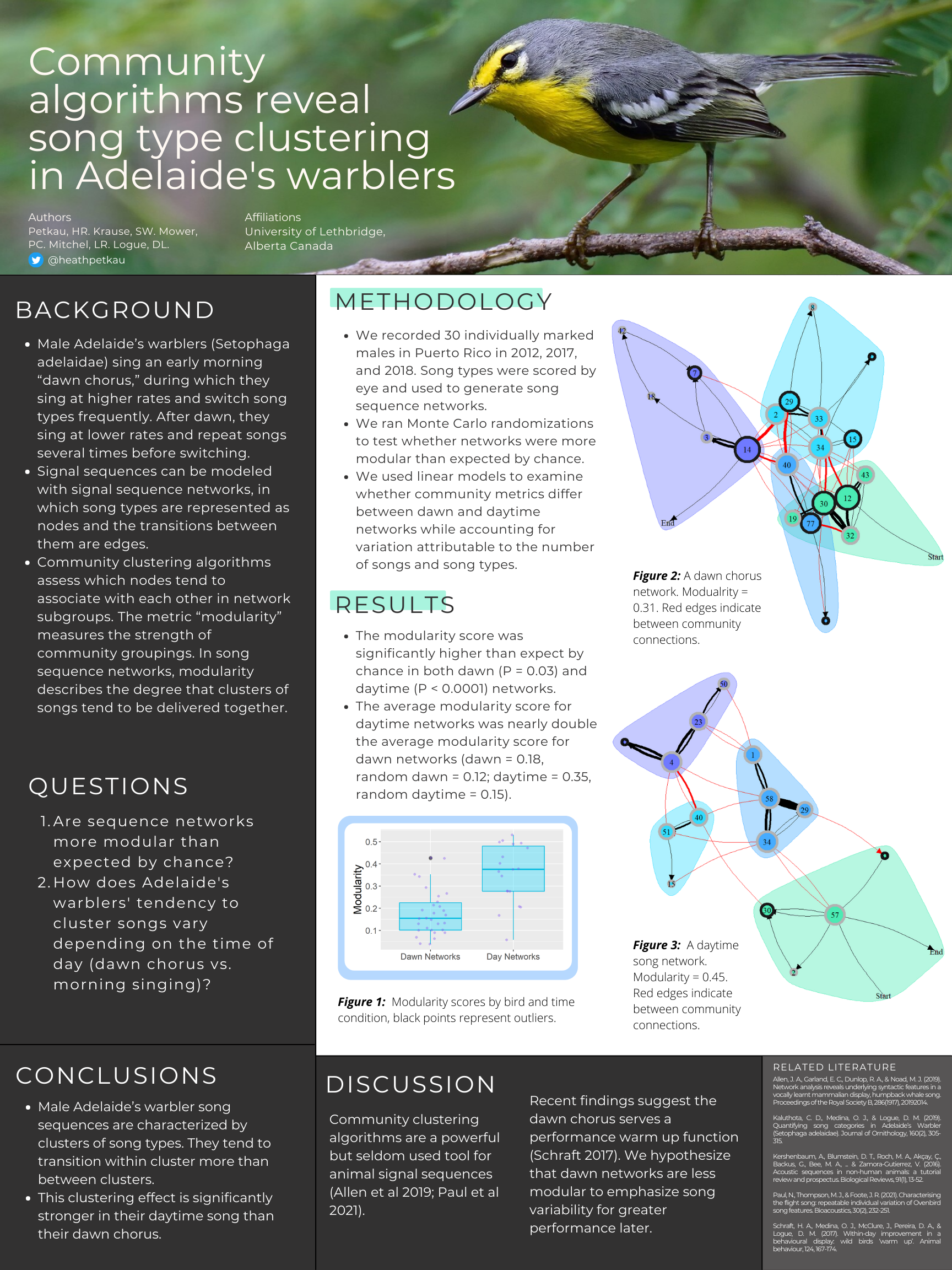Applying quantitative methods of analysis to birdsong organization, Heath Petkau is spending his summer vacation researching aspects of animal communication. Heath, a fourth-year psychology student, is working in Dr. David Logue’s Birdsong Lab. The Birdsong Lab primarily studies Adelaide’s warbler, a species of songbird that lives in Puerto Rico.
Adelaide’s warbler is a non-migratory species, meaning it never leaves its habitat of Puerto Rico. Because of this, the birds form long-lasting relationships with one another, communicating via songs, vocalizations, visual displays, and fights. Dr. Logue’s Birdsong Lab studies how these vocalizations by the warblers mediate social interactions, and his research looks to understand further the function of certain types of songs.
“When you speak a sentence, the organization of the words conveys different meanings. Having more words, repeating words, the timing between them all impact the meaning that is conveyed,” Heath says as he describes his project, noting that actions such as repetition and quick speaking could indicate high levels of stress in a speaker.
Using more words and formatting them in less direct ways could indicate you're writing a paper you've procrastinated and did minimal research for. These additional meanings to the signals themselves are present in animal communication. By learning how signals are organized and form meaning in animal communication, we can learn more about the evolution of sophisticated communication systems, such as our own.
Heath is researching the organization of song in Adelaide’s warbler using network analysis and clustering algorithms. Network analysis, Heath says, is best described by drawing two circles with an arrow between them, each representing a word and the arrow indicating the order they are spoken.
Now imagine you were to put a novel in the same format; there would be a bunch of words that are used infrequently and a few very common ones, like ‘the’ and ‘and’. This is essentially what I am doing with birdsong, and we are looking for is evidence that kind of hierarchy.


He adds that what makes this study different from others is the use of clustering algorithms, as songs associated with each other are grouped together and measured for the strength of their associations.
With the support of a Chinook Summer Research Award, Heath is working on statistical analyses and is learning how to interpret aspects of network analysis for animal communication. Prior to his work this summer, Heath completed an independent study with Dr. Logue, and says he enjoyed the atmosphere of the Birdsong Lab and the Animal Behaviour Research Group at the university.
This experience has been incredibly valuable, giving me the opportunity to meet others in my field and get hands-on learning experience with the research process. Because of this project, I was able to attend the annual Animal Behaviour Conference last summer and participate in its mentorship program. This summer I will be presenting my findings as well.
Heath adds that he enjoys working in the new Science Commons building with other students in a lab setting. In addition to learning hard skills like scientific writing and statistical analysis, Heath is also learning soft skills while conducting his research, like problem solving, teamwork, and critical thinking. Heath recently presented findings from his study at the Animal Behaviour Society conference, which are illustrated in the poster below.
